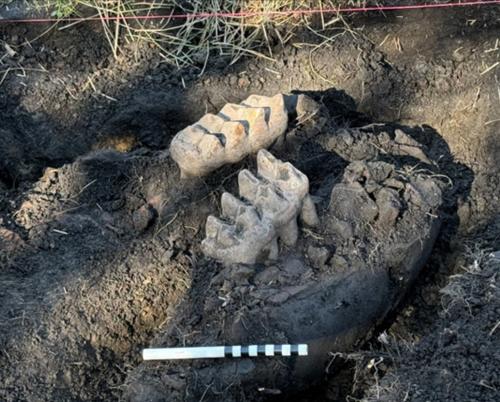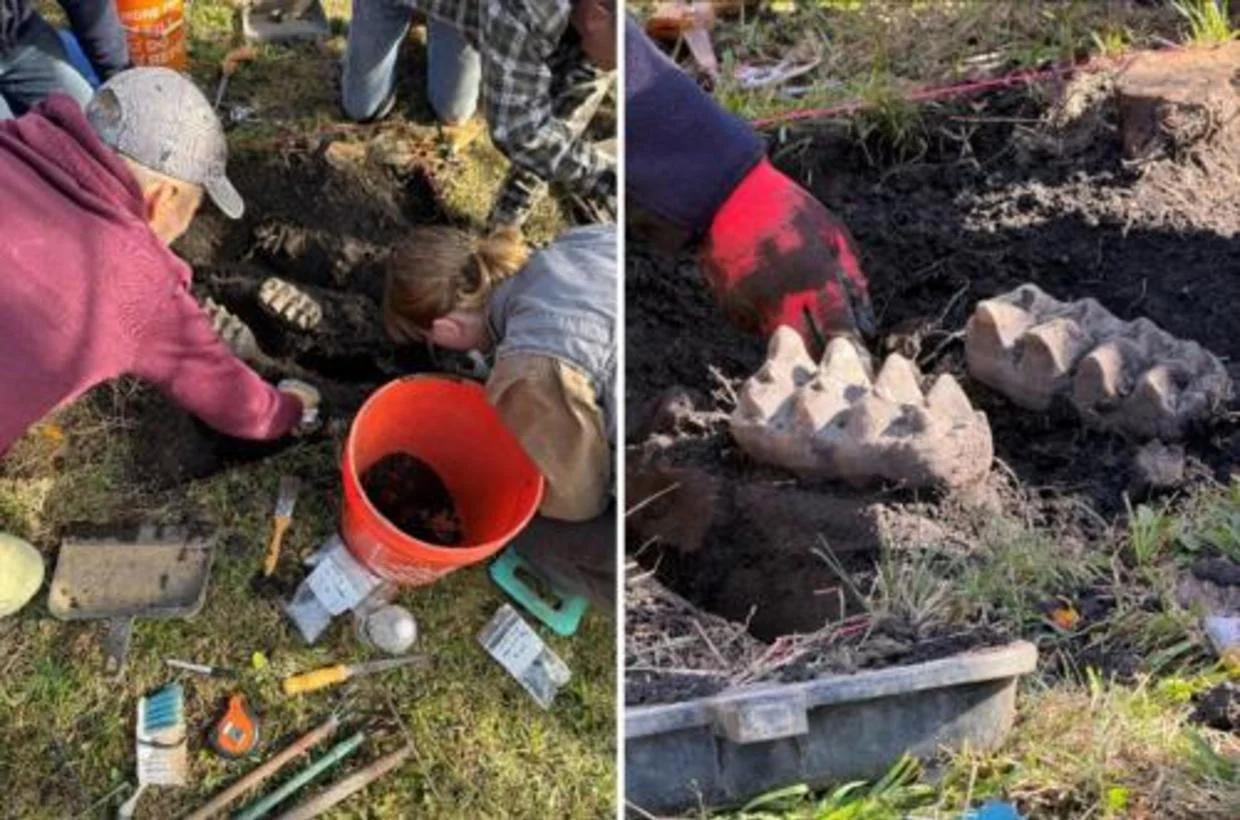A complete mastodon jaw has been discovered in the back yard of a New York home, along with a few other bits and pieces of the prehistoric herbivore, an extinct relative of modern-day elephants.
The first hints came in late September, when the resident found two giant teeth in the shade of some plant fronds on his property near Scotchtown, in Orange County. A little digging revealed two more teeth just a few inches below ground.
“When I found the teeth and examined them in my hands, I knew they were something special,” says the homeowner, who does not want to be identified.
 It didn’t take much to excavate these fossils. (New York State Museum)
It didn’t take much to excavate these fossils. (New York State Museum)
The man decided to call in professionals from the New York State Museum and SUNY (State University of New York) Orange to investigate further.
Their excavation uncovered an entire adult mastodon jaw (genus Mammut), along with part of a toe bone and a fragment of a rib.
“While the jaw is the star of the show, the additional toe and rib fragments offer valuable context and the potential for additional research,” says anthropologist Cory Harris from SUNY Orange.
“We are also hoping to further explore the immediate area to see if there are any additional bones.”
The team is yet to announce the mastodon’s species or any other details. It’s undergoing analysis by scientists to determine its age, diet, and habitat, as well as carbon dating to find just how long these bones have been kicking around in the shallow dirt of the Empire State.
Evolutionary ecologist Robert Feranec, curator of ice age animals at the New York State Museum, says the latest find is a testament to the state’s rich paleontological history.
“This mastodon jaw provides a unique opportunity to study the ecology of this magnificent species, which will enhance our understanding of the ice age ecosystems from this region,” he says.
“Fossils are resources that provide remarkable snapshots of the past, allowing us to not only reconstruct ancient ecosystems but also provide us with better context and understanding of the current world around us.”
 You never know what might be buried in your back yard. (New York State Museum)
You never know what might be buried in your back yard. (New York State Museum)
More than 150 mastodon fossils have been found in New York state, and about a third of those were from Orange County. But it’s been 11 years since the last discovery of this kind.
Most of the museum’s 16,000 local fossil specimens are about 15,000 years old, placing them squarely within the Late Pleistocene.
Many of these were unearthed from Orange County cave sites, like the Dutchess Quarry Caves, which also preserved treasured artifacts left by prehistoric hunter-gatherers during the last ice age 12,000 years ago, including a very rare Paleo-Indian stone tool called a fluted point.
Earth had a drastically different climate during the Late Pleistocene, which spans about 129,000 to 11,700 years ago. It was much colder, with massive glaciers freezing up the world’s oceans and forming icy land bridges.
One of these bridges allowed humans to migrate across from Siberia to Alaska, though whether this was the first human migration to North America is a topic of debate among experts.
In North America, about 35 different kinds of megafauna were wiped out during the Late Pleistocene, including mastodons. The fossils of these giants are scattered across the continent, from the West Coast to the East and even down to Florida, and their remains are often tied up with the question of human arrival to the continent, and our role in pushing these animals to extinction.
We are yet to hear if this newfound mastodon will weigh in on the topic – that will depend on evidence of any prehistoric human bone meddling, and how old the bones actually are.
“Each discovery like this one brings us one step closer to piecing together the full story of New York,” says Feranec.



